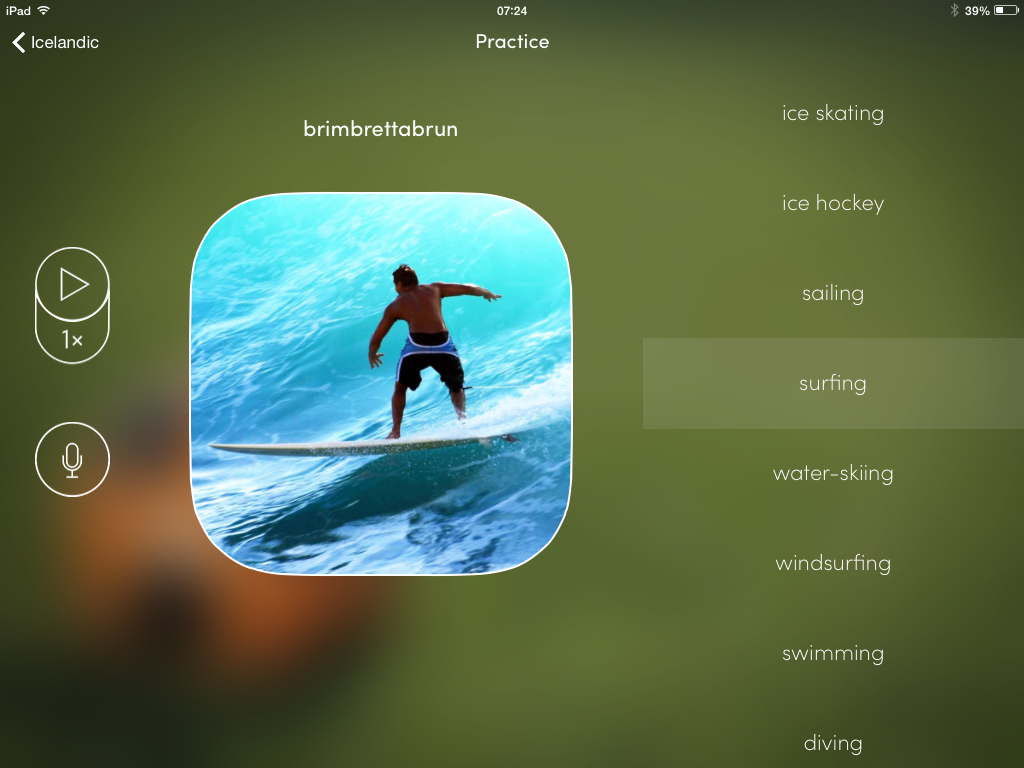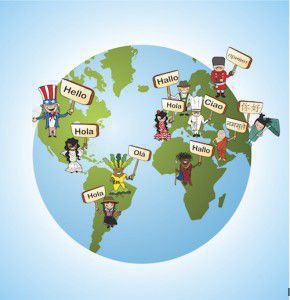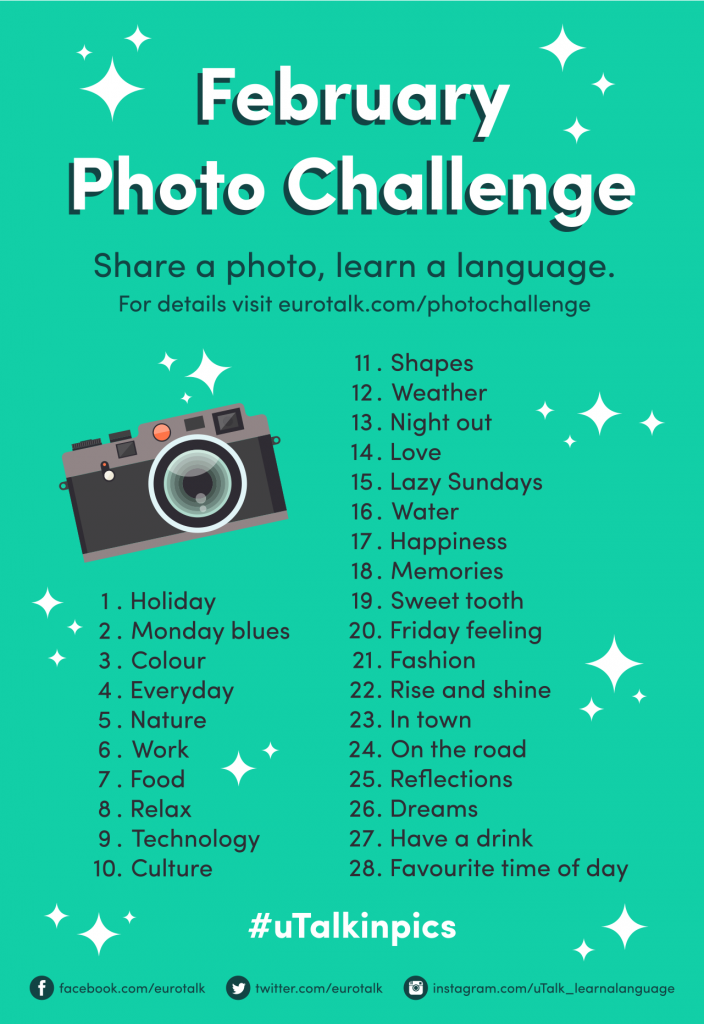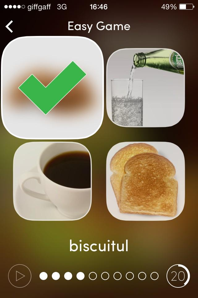The EuroTalk February photo challenge
Following the success of this month’s uTalk challenge, we’ve decided to have another one! But this time it’s open to everyone, and hopefully requires a bit less brain strain…
Introducing the EuroTalk February photo challenge!
How does the challenge work?
1. Each day, starting from 1st February, you’ll get a new theme, and you need to share a photo that reflects that theme on one or more of your social networks – more on that in a second. Try and interpret the theme in a fun, creative way, as we’ll be sharing our favourites over the course of the month, choosing a Photo of the Day each day and selecting an overall winner at the end of the month.
2. When you share your photo, tell us how to say whatever’s in your picture, in another language. It can be any language you like; you can even do a different one every day if you want to, as long as it’s not your own. And remember to tell us which language it is too!
3. Use hashtag #uTalkinpics to let everyone (including us!) know you’re taking part in the challenge.
Example:
My photo for #Holiday – sunset, or der Sonnenuntergang in German 🙂 #uTalkinpics
Where should I share my photos?
4. You can share your photos on whichever social network you like – Facebook, Twitter, Pinterest, Instagram, anywhere… But to be considered for Photo of the Day and overall winner, you’ll need to use one of the following:
- Tweet us @EuroTalk
- Tag us on Instagram: @uTalk_learnalanguage
- Post on our Facebook page
- Email your photo to us at challenge@eurotalk.com if you don’t belong to any social networks
And remember to use hashtag #uTalkinpics
What if I miss a day?
5. If you miss a day, or don’t find out about the challenge until it’s already started, it’s no problem. You can catch up by posting more than one picture per day – or just skip that day altogether and carry on.
How can I win?
6. We’ll choose our Photo of the Day the following morning (or possibly on Monday for photos submitted over the weekend), to allow entries right up to the end of the day from every time zone. This will appear on Facebook, Twitter and Pinterest, as well as in a weekly round-up here on the blog, so be ready to share your glory with the world!
7. At the end of the month, we’ll choose our overall winner to receive a cool prize. This will be someone who we feel has really got into it and had some fun. The winner will be chosen by the EuroTalk team and our decision is final 🙂
Spread the word!
8. Please share the challenge with friends, and let’s get the world talking lots of different languages…
Good luck, and have fun – we can’t wait to see your photos!
My uTalk Romanian journey so far
Having a look at the uTalk challenge scoreboard in the EuroTalk office, it looks like I’m some way behind with my Romanian learning. But I haven’t give up yet! Here’s what I’ve learned so far about this language.
1. It’s a lot like Italian
This is very helpful for me, as I already understand a reasonable amount of Italian (even if it’s only from watching too many episodes of Inspector Montalbano…), so words like ‘la rivedere’ (goodbye, like the Italian arrivederci), ‘buna seara’ (good evening, like buona sera in Italian) and many colours and adjectives are very similar (‘urata’, ugly, sounds like the Italian word brutta, and many others like ‘plin’/pieno, ‘trist’/triste, ‘rapid’/rapido, ‘negrul’/nero or ‘verdele’/verde). Numbers are also very close to those in Spanish or Italian.
2. Sometimes you can make words just by adding ‘ul’ to the end
Ioana helpfully informs me that this is just the masculine ‘the’ (the feminine is ‘le’), but it still seems like a reliable strategy to guess words. After words such as ‘trenul’, ‘aeroportul’, ‘pasaportul’, ‘doctorul’ and my personal favourite ‘biscuitul’, I started guessing other words like ‘vinul’ (correct!) and ‘mapul’ (sadly incorrect), which occasionally works.
3. The speaking game is really fun and addictive, and probably the best way to learn
I don’t know about other people, but for me, producing the language is the key to remembering it. So, speaking or writing the language is key. Repeating the phrases and then using my own recordings to identify the pictures is weirdly fun and helps me to remember better than simple guessing of pictures in the easy or hard games, which encourage recognition but not reproduction. Of course the ultimate test is the recall game, where you have to remember and say the word or phrase yourself and then check it. These games can take a while to get 100% on, but are an excellent tool.
4. You have to learn to make some brand new sounds
Romanian has a few fun letters that we don’t have. ‘â’ (with a little hat) sounds like an ‘uh’, not an ‘a’ at all. So ‘Cât e ceasul?’ (what’s the time) isn’t pronounced how it looks to English speakers, but like ‘Cuht e chassul’, because the â is a different letter, and ce is a ‘ch’ sound like in Italian. It also has a funny ‘I’ which looks like this: î and sounds like another ‘uh’, which is difficult to describe. This sound is in words like ‘închis’ (closed) which sounds more like ‘unkees’. These sounds are pretty fun to pronounce if you ask me, and Ioana says I sound ok, which I put down to repeating after the native speakers in uTalk.
5. They invented crazy words for vegetables that make no sense!
Ok, maybe that’s a bit harsh, but my knowledge of French, Spanish, Italian, English and German can’t help me when it comes to learning the names of vegetables that have names like ‘bamele’, ‘ardeiul’, ‘porombul’ and ‘varza’, which don’t relate to any language I know. They can’t even call zucchini zucchini: it’s actually ‘dovleceii’.
Somehow I don’t think I’m going to beat Nat in the uTalk challenge, but I’m having fun with Romanian anyway!
Alex
(Editor’s note: it turns out nobody could beat Nat, who completed the challenge in Icelandic a couple of days ago. She’s now considering which language to learn next – any suggestions?)
A language learning love story
Why learn a language this new year? Well, for one thing, you never know where it might take you.
Meet Ed. He thought he was just going out for a meal with friends. Little did he know what was about to happen…
And if Ed and Mei Li have inspired you to learn a new language, why wait? Download uTalk or visit our website now!
Learning lots of Icelandic!
Góðan dag!
As you may remember, I’ve been learning Icelandic for the January uTalk Challenge. It’s a totally new language for me, with different rules and pronunciation to other languages I’ve studied, and I’ve absolutely fallen in love with it.
There are a few sounds in Icelandic which I really love. One of them, which I’m going to (unflatteringly) call the ‘spitty’ sound, is the sound made by a double ‘L’, as in the word for car (‘bíll’). It’s incredibly satisfying to replicate, although I can’t really explain why – just find an Icelandic person and ask them to say the word for car, or get uTalk and hear our lovely voice artists say it, and you’ll see what I mean.
There are also a few sounds which have just tied my tongue into knots. Although a surprising amount of Icelandic seems vaguely intuitive for an English native speaker, occasionally I’ll come across a preposterously long word boasting a collection of ‘eð’s and ‘þorn’s (the two ‘th’ letters), and it’s really been a case of memorising the words at this stage. It took me absolutely ages to master ‘hjúkrunarfræðingur’ (rather less manageable than English’s nice and simple ‘nurse’) and ‘afgreiðslumaður’ (‘shop assistant’). However, on most topics there have been several items I can make an intelligent guess at, either because they have some connection to the English (‘hjarta’- heart, ‘kókoshneta’- coconut, ‘baunir’- peas, ‘bjór’- beer) or because Icelandic is wonderfully logical at times: it doesn’t take too much imagination to see that ‘á bak við tréð’ indicates ‘behind the tree’, and ‘Ég er með tannpínu’ means ‘ I have (lit. I am with) toothache’. So I have had it slightly easier than some of my colleagues, who have been battling with languages completely unconnected to English.
My technique has been to cram as much in as quickly as possible, launching into the Hard Game first and then going back to Practice to check on what I got wrong. I’ve left all the Recall sections until I’ve completed the other games in all the sections, and then I’ve gone back and used it as a test of how much I remember. I’ve also been pointing to people and things all weekend and saying the word in Icelandic, and getting anyone I’m with to repeat the words back to me. I’ve found this really useful because it makes you assume a certain amount of teacher-like responsibility, so if I’m not 100% sure on what I’ve told them I’ll go back and double-check it. Also, if they repeat back anything nonsensical I realise I’ve probably pronounced it terribly in the first place, and need to revise it. So thank you to everyone who’s put up with me spouting random Icelandic words at them recently! What I now plan to do is to leave the Icelandic for a week and then to come back to it towards the end of January and do all the Recall sections again, and see how much I remember (hopefully a lot).
I’ll leave you with my favourite word so far, which is ‘surfing’ – again, just another really satisfying sound: ‘brimbrettabrun’:
 Is anyone else doing the uTalk challenge? How are you getting on?
Is anyone else doing the uTalk challenge? How are you getting on?
Nat
6 great language learning blogs to visit in 2015
So how’s everyone’s 2015 going? We hope your year has got off to a great start, and that your new year’s resolutions are all still intact…?
 We’d like to start the year by thanking you all for reading our blog. With a bit of luck, at some point over the last couple of years it’s inspired you, made you smile or just entertained you for a few minutes. We love sharing our thoughts on languages and everything connected to them (sometimes fairly tenuously connected!) so please do keep coming back. Remember, you can subscribe by email to get all our posts delivered straight to your inbox 🙂 And as always, we love hearing from anyone who’d like to be a guest blogger, or with suggestions on topics you’d like to see covered.
We’d like to start the year by thanking you all for reading our blog. With a bit of luck, at some point over the last couple of years it’s inspired you, made you smile or just entertained you for a few minutes. We love sharing our thoughts on languages and everything connected to them (sometimes fairly tenuously connected!) so please do keep coming back. Remember, you can subscribe by email to get all our posts delivered straight to your inbox 🙂 And as always, we love hearing from anyone who’d like to be a guest blogger, or with suggestions on topics you’d like to see covered.
But today we wanted to share with you a few other fantastic language learning blogs that we’ve discovered, which are full of great suggestions, advice and ideas. Please share your own favourites with us in the comments, and we’ll add the best ones to our list!
FlashSticks is a UK-based company with a simple yet ingenious idea – vocabulary flashcards on colour-coded sticky notes. Their Sticky Blog is a treasure trove of fantastic articles written by the FlashSticks team, who clearly know a thing or two about learning languages. They also have a really fun and friendly Twitter account, so they’re well worth a follow there too.
We recommend: 6 tips for getting out of a language learning rut
Lindsay Dow is a language fan who’s also an English tutor. Her blog is a great mix of written articles and videos, and includes learning advice as well as lots about language in popular culture like movies and music. Right now, Lindsay’s running a fantastic photo challenge over on Instagram, which looks like a lot of fun and a great way to learn.
We recommend: 82 British TV shows to help with your English
Sam Gendreau, the polyglot behind this great language site, is passionate about helping other people learn a language. His blog is full of useful and interesting articles, perfect for those with a language addiction or just a passing interest. We challenge anyone to visit Lingholic and not come away feeling inspired and encouraged.
We recommend: Ten amazing reasons why you should learn a foreign language
Ok, so we’re a bit biased because the author of this blog is a former EuroTalker. But that doesn’t change the fact that it’s a great site. As a self-pronounced language geek and freelance translator, she really knows her stuff. Visit the blog for tips and advice for language learners, translators… and anyone interested in how to be British.
We recommend: Don’t be scared… How to get talking in your foreign language
Probably most people already know this blog, as its creator, Benny the Irish Polyglot, is pretty famous these days. Benny is the perfect example of someone who struggled with languages at school but has since fallen in love with them. Since 2003, he’s been travelling the world, learning new languages (in three months) and sharing his experiences and advice.
We recommend: How to make a New Year’s Resolution and actually keep it
Not a language learning blog as such, but so much fun. James is an illustrator from the UK who draws fantastic pictures all based on languages from around the world. His collection includes everything from how to sound like a monkey in different languages to literal translations of the titles of popular TV shows. Be warned though, you may find it hard to drag yourself away.
We recommend: The sounds of the New Year
There are lots more fantastic language blogs out there, so please don’t be offended if we didn’t mention yours this time…
Enjoy!



